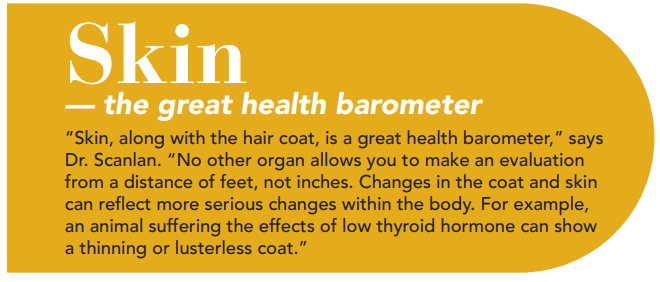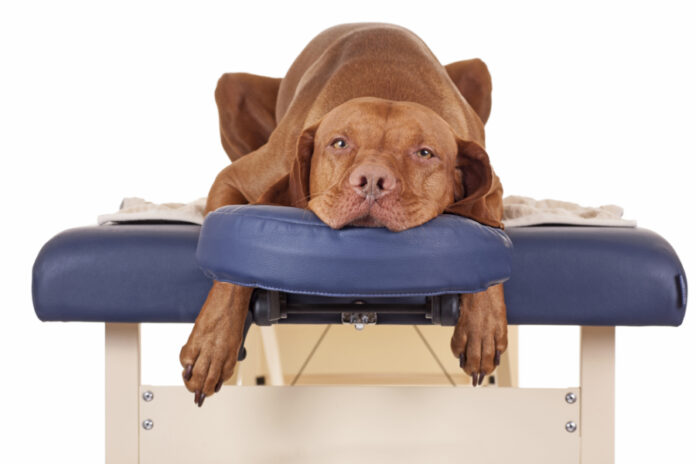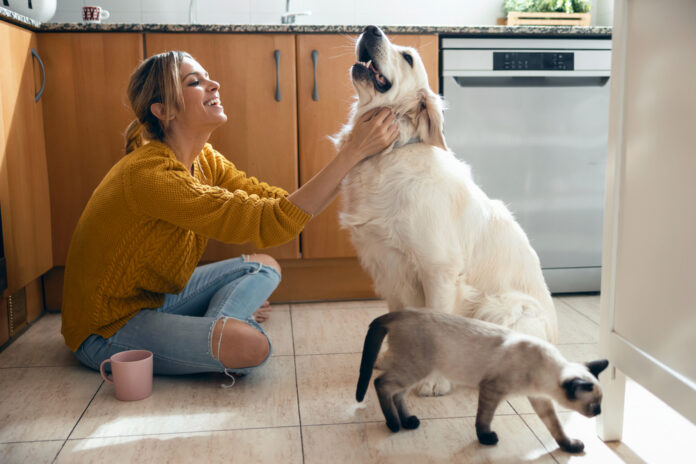What can your dog or cat’s skin tell you about his health?
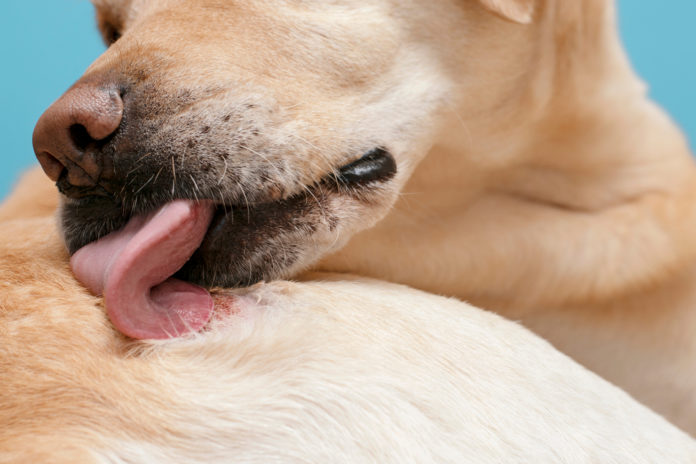
Pay attention to the condition of your dog or cat’s skin. As his largest and hardest-working organ, it can tell you a lot about his overall health and well-being.
Your dog or cat’s skin is his largest and hardest-working organ. It protects him from the elements, helps regulate his body temperature, and allows him to enjoy your loving touch. But his skin plays another important role – it can provide the first clues to brewing health problems. In fact, you can look at the condition of your animal’s skin – whether it’s dry or greasy, exhibits hot spots, pigment changes or other abnormalities — as an early warning system for hidden health issues.
Dry skin, itchiness, dandruff, flaking
- If your dog or cat’s skin is dry and itchy, with flakiness and/or dandruff, it could signal poor diet and inadequate nutrition uptake, or a serious problem such as demodectic mange, canine scabies, or ringworm. Your veterinarian will perform a thorough skin evaluation and may take scrapings or perform biopsies to rule out systemic issues.
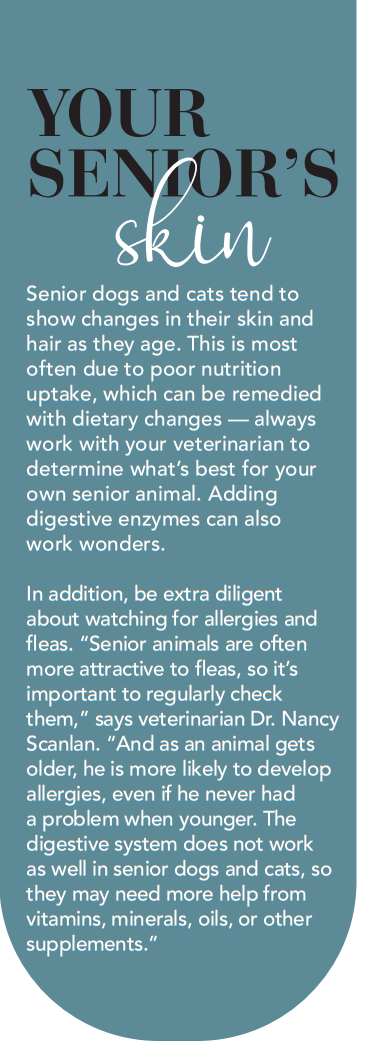 Itchiness is often a sign of flea bite dermatitis. In fact, a single flea bite can set off a firestorm of itching and scratching in an allergic dog or cat, resulting in inflamed skin and dandruff. Taking steps to help prevent flea bite dermatitis in the first place is important, and can be achieved in part through proper diet – poor nutrition is a big contributor to allergies. Natural flea-repelling products are also important for keeping these pests at bay
Itchiness is often a sign of flea bite dermatitis. In fact, a single flea bite can set off a firestorm of itching and scratching in an allergic dog or cat, resulting in inflamed skin and dandruff. Taking steps to help prevent flea bite dermatitis in the first place is important, and can be achieved in part through proper diet – poor nutrition is a big contributor to allergies. Natural flea-repelling products are also important for keeping these pests at bay- If your animal has already been diagnosed with flea bite dermatitis, or one of the other conditions mentioned above, it’s important to first address his discomfort, even if it means using medication for the short term. “We need to provide immediate symptom relief for the animal,” says veterinarian Dr. Katie Kangas.
- “When we get him back on track and more comfortable, we can address issues with the diet,” Dr. Kangas continues. “The vast majority of skin issues stem from the gut. A dog with leaky gut syndrome can have multiple problems with his skin. In this condition, toxins literally leak into the body, setting the stage for a reactive response and taxing the immune system.”
Many things can trigger leaky gut syndrome, including food toxins, medications, steroids, and the glyphosates found in common herbicides. In today’s world, all animals are at risk of developing leaky gut syndrome, so it makes sense to minimize toxins even if the dog or cat doesn’t have any symptoms. Prevention is key, so invest in a high quality pet food, use only natural shampoos and grooming products, and switch to natural herbicide use.
- Kangas also recommends adding a few strategic supplements once your dog’s condition is stable. “Omega-3 fatty acids are crucial for good health and will help improve his skin quality,” she says. “A good fish oil is the easiest way to supplement Omega-3s, but you can also use sardines packed in spring water. I recommend just half a sardine for cats per day and one whole sardine for dogs. Sardines are a great source of minerals, protein, vitamin B12, and calcium. Even better, they don’t pose much of a mercury risk. Sardines are very small, and because they feed only on plankton, they don’t absorb mercury like tuna or salmon.”
- Clinical research shows that adding digestive enzymes will also help improve nutrition uptake and improve gut stability, thereby increasing skin health. Choose digestive enzymes designed for dogs or cats, as these species have specific needs that are different from our own. Always consult your veterinarian before adding supplements or changing your animal’s diet.
- Don’t overlook one of the easiest fixes — keeping your animal hydrated. Fresh, filtered water is essential for healthy skin and hair. Be sure your dog or cat is drinking enough water by keeping his bowl clean and in a private location. Cats, especially, like to lap their water undisturbed.
Greasy skin, hot spots, pustules
- When the sebaceous glands produce an excessive amount of sebum, you may notice that your animal’s skin looks and feels greasy. Because greasy skin (seborrhea) is often smelly, it’s hard to miss. Most often seen on the back, face, hind end, and in skin folds, seborrhea is diagnosed through blood work, skin cultures, and sometimes hormone tests to determine the underlying cause.
An integrative treatment approach to seborrhea may include a round of corticosteroids, the addition of Omega-3s to the diet, and bathing in anti-seborrheic shampoos or sprays. Occasionally, if a secondary infection if found, the condition is treated with antibiotics.
- “Hot spots, also known as acute moist bacterial dermatitis, are generally caused by trauma of some kind,” says Dr. Kangas. “A burr may have scratched the skin, or a bite or scratch from another household animal may cause them. Some hot spots are caused by flea bites. They grow extraordinarily fast, from the size of a quarter to a softball in a matter of hours, so they need immediate veterinary treatment.”
- Pustules are smaller, more localized, and less painful than a hot spot. They look like large pimples and are commonly caused by a bacterial infection.
Pigment changes, red spots, patchy hair loss
- Pigment changes often show as dark, leathery spots that are thicker than the surrounding tissue. This darkening of the skin is called hyperpigmentation and is not a disease in itself, but rather a sign of a deeper problem, usually a reaction to something else. It’s often seen in animals with allergies, hormonal problems, yeast infections, and sometimes even a canine form of lupus. Your veterinarian will want to do some diagnostic tests to be sure. Treatment will depend on the root cause.
- Tiny red spots, usually on the belly, may be caused by an allergy, fleas or mites, or from contact with something in the environment. Even if they don’t seem to bother your dog or cat, a veterinary exam to rule out any underlying condition is recommended.
- Patchy hair loss in dogs, also known as alopecia, can be caused by a poor diet, stress, or a fungal infection like ringworm. Ringworm is highly contagious to other animals and humans so early treatment is essential. If your veterinarian identifies ringworm, you’ll have to take immediate measures to protect yourself and other animals in the household. Wash your hands thoroughly after handling your animal and separate him from any other dogs and cats in the household. Be sure to wash bedding as well.
Think of your dog or cat’s skin as a barometer of his health. “What is seen on the surface is always more than skin deep,” says Dr. Kangas. “As an integrative veterinarian, I use hair and skin quality as a way to understand what is going on with the overall health of the animal. Often, what begins as a visit for a dull coat or patchy hair loss ends up revealing key information about the animal’s internal health.”




